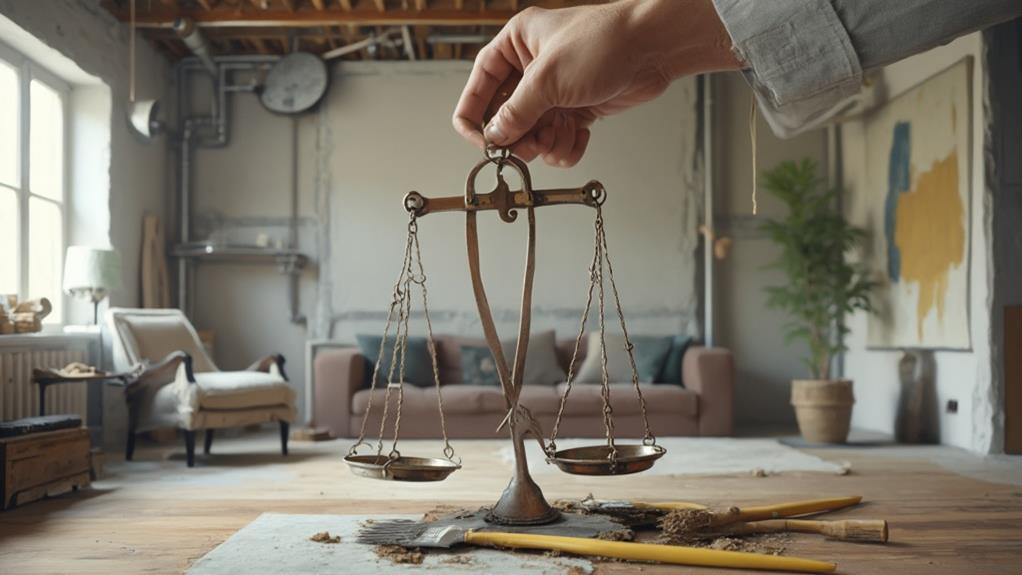When prioritizing structural vs. cosmetic updates in your budget, focus on safety and functionality first. Address critical structural issues like foundation problems, roof damage, and electrical hazards immediately. Next, invest in energy-efficient upgrades that offer long-term savings and value. Allocate remaining funds to high-impact cosmetic changes that enhance your home's appeal and livability. Create a comprehensive budget plan, including a buffer for unexpected costs. Consider phasing projects strategically to manage expenses and minimize disruptions. Seek professional guidance to assess your home's needs and maximize return on investment. Balancing structural integrity with aesthetic improvements ensures a safe, efficient, and attractive living space.
Assessing Your Home's Needs
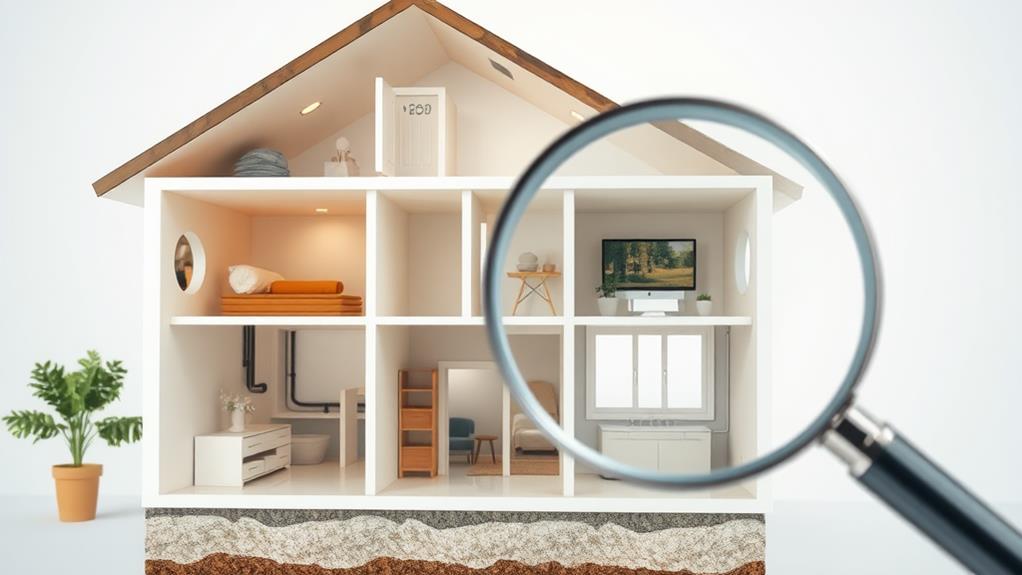
Begin your home improvement journey by conducting a thorough assessment of your property's current condition. This crucial step involves examining both structural and cosmetic aspects of your home.
Start by inspecting the foundation, roof, plumbing, electrical systems, and HVAC units for any signs of wear, damage, or inefficiency. Look for cracks, leaks, outdated wiring, or malfunctioning components that could pose safety risks or lead to costly repairs if left unaddressed.
Next, evaluate the cosmetic elements of your home, including paint, flooring, fixtures, and overall design. Consider which areas appear dated, worn, or no longer align with your aesthetic preferences. As you assess, create a comprehensive list of all identified issues and potential improvements, categorizing them as either structural or cosmetic. Prioritize these items based on urgency, safety concerns, and potential impact on your home's value and functionality. This systematic approach will provide a clear picture of your home's needs, allowing you to make informed decisions about allocating your budget between essential structural updates and desirable cosmetic enhancements.
Understanding Long-Term Value
Three key factors contribute to understanding the long-term value of home improvements: return on investment, durability, and future market trends. Return on investment (ROI) measures the financial benefit gained from an improvement compared to its cost. Structural updates often yield higher ROIs than cosmetic ones, as they address fundamental issues and can prevent costly repairs down the line.
Durability refers to how long an improvement will last and continue to add value. Structural updates typically have longer lifespans than cosmetic ones, making them more cost-effective over time. For instance, a new roof can last 20-30 years, while a trendy paint color may need refreshing in just a few years.
Future market trends play a crucial role in determining long-term value. Anticipating buyer preferences and industry standards can help homeowners make informed decisions about which improvements to prioritize. Energy-efficient upgrades, for example, are likely to remain desirable as sustainability concerns grow. By considering these factors, homeowners can make strategic choices that balance immediate needs with long-term value, ensuring their investment in home improvements pays off well into the future.
Creating a Comprehensive Budget Plan
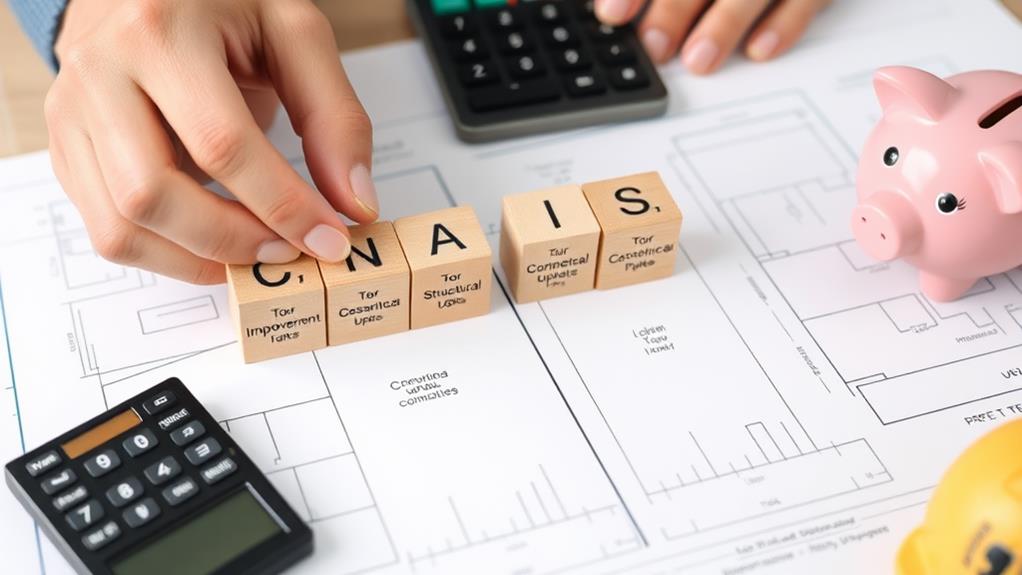
A well-crafted budget serves as the foundation for any successful home improvement project. To create a comprehensive budget plan, start by assessing your financial situation and determining how much you can allocate to home updates. Consider various funding options, including savings, home equity loans, or personal loans, and factor in associated costs like interest rates.
Next, itemize all potential expenses, including materials, labor, permits, and unexpected contingencies. Research costs for both structural and cosmetic updates, obtaining multiple quotes from reputable contractors. Prioritize essential structural repairs and improvements that enhance your home's functionality and safety.
Allocate funds for cosmetic updates based on their impact and cost-effectiveness. Consider DIY options for some cosmetic projects to reduce expenses. Build in a buffer of 10-20% for unforeseen issues or cost overruns.
Create a timeline for your projects, spreading costs over time if necessary. Regularly review and adjust your budget as you progress, tracking expenses and making informed decisions about where to allocate additional funds or cut costs. This flexible approach ensures your budget remains realistic and aligned with your prioritized home improvement goals.
Balancing Safety and Aesthetics
When prioritizing home improvements, homeowners often face the challenge of balancing safety concerns with aesthetic desires. While structural updates are critical for maintaining a safe living environment, cosmetic improvements can enhance the home's value and livability. The key is to strike a balance that addresses both aspects effectively.
Safety should always be the primary concern. Structural issues like foundation problems, roof leaks, or electrical hazards must be addressed promptly to prevent potential accidents or further damage. These improvements, though often unseen, are essential for the long-term integrity of the home.
Simultaneously, aesthetic updates can significantly improve the quality of life and potentially increase property value. To achieve this balance, homeowners should first conduct a thorough assessment of their property's condition. Prioritize any safety-related repairs or upgrades, allocating a substantial portion of the budget to these essential tasks.
Once critical issues are addressed, consider allocating remaining funds to cosmetic improvements that align with both personal preferences and market trends. This approach ensures a safe living environment while also enhancing the home's overall appeal and functionality.
Identifying Essential Structural Repairs
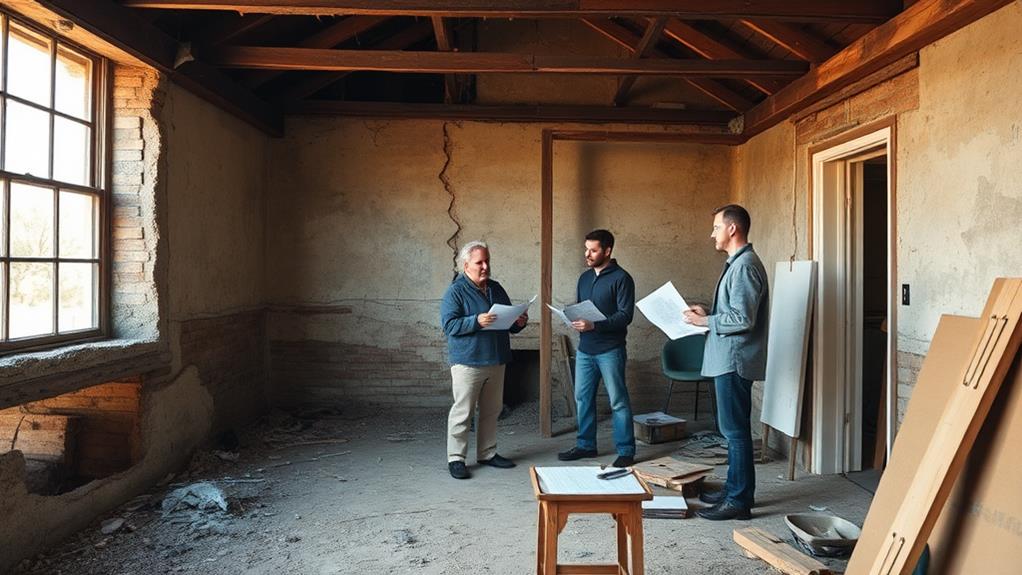
How can homeowners accurately identify essential structural repairs? The process begins with a thorough inspection of the property, focusing on key structural components. Look for signs of foundation issues, such as cracks in walls or uneven floors.
Examine the roof for sagging, missing shingles, or water damage. Check load-bearing walls for cracks or bowing. Inspect the basement or crawl space for moisture problems or signs of pest infestation.
Pay attention to doors and windows that don't close properly, as this may indicate structural shifting. Evaluate the condition of support beams and joists in the attic or basement. Look for signs of water damage or rot in wooden structures. Assess the plumbing and electrical systems for any visible deterioration or outdated components that could pose safety risks.
If unsure about the severity of potential issues, consult a professional home inspector or structural engineer. These experts can provide a comprehensive assessment and prioritize repairs based on urgency and safety concerns. Remember that addressing structural issues promptly can prevent more extensive and costly damage in the future, making it a crucial aspect of home maintenance.
Prioritizing Energy-Efficient Upgrades
While addressing structural repairs is vital, homeowners should also consider energy-efficient upgrades to enhance their property's sustainability and reduce long-term costs. These improvements can significantly impact energy consumption, utility bills, and overall home comfort.
Start by prioritizing insulation upgrades, particularly in attics, walls, and crawl spaces. Proper insulation helps maintain consistent indoor temperatures, reducing the workload on heating and cooling systems.
Next, consider replacing old windows and doors with energy-efficient models to minimize drafts and heat transfer. Upgrading to a high-efficiency HVAC system can dramatically reduce energy consumption and improve indoor air quality. Smart thermostats offer precise temperature control and scheduling options, further optimizing energy use. Water-saving fixtures and appliances, such as low-flow showerheads and ENERGY STAR-certified washing machines, can substantially reduce water and energy consumption.
LED lighting and solar panel installations are additional energy-efficient upgrades worth considering. LED bulbs consume less energy and last longer than traditional incandescent lights, while solar panels can significantly offset electricity costs over time. By prioritizing these energy-efficient upgrades, homeowners can create a more sustainable living environment and realize long-term savings on utility expenses.
Maximizing Return on Investment
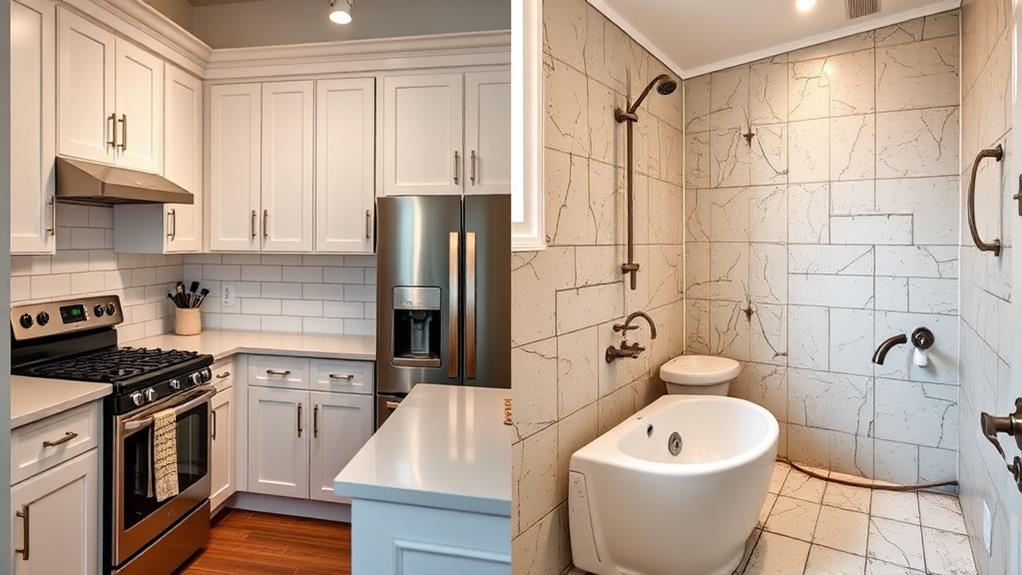
Return on investment (ROI) is a crucial factor to consider when planning home improvements. When prioritizing between structural and cosmetic updates, focus on projects that offer the highest potential for value appreciation.
Structural improvements, such as foundation repairs, roof replacements, or electrical system upgrades, typically yield better long-term ROI compared to purely aesthetic changes.
To maximize ROI, target updates that address essential functionality and safety issues first. These improvements not only protect your investment but also appeal to potential buyers if you decide to sell. Next, consider energy-efficient upgrades, which can reduce ongoing costs and increase property value.
For cosmetic updates, prioritize kitchen and bathroom renovations, as these areas tend to offer the best returns.
Balance your budget between necessary structural work and strategic cosmetic enhancements. While structural updates may not be immediately visible, they provide a solid foundation for future improvements. Cosmetic changes can significantly boost curb appeal and create a positive first impression.
Phasing Projects Strategically
Strategic phasing of home improvement projects can significantly enhance the efficiency and effectiveness of your renovation efforts. By carefully planning the order and timing of updates, homeowners can minimize disruptions, manage costs, and maximize the overall impact of their investments.
Begin with critical structural repairs to ensure the home's integrity and safety. Address foundation issues, roof repairs, or electrical and plumbing upgrades first. These improvements create a solid base for subsequent work and prevent costly damage to cosmetic updates later.
Next, focus on energy-efficient upgrades like insulation, windows, and HVAC systems. These projects can lead to immediate cost savings and improve comfort, making the renovation process more bearable.
Following structural and efficiency improvements, tackle major remodeling projects such as kitchen or bathroom renovations. These updates often yield high returns on investment and significantly enhance the home's functionality and value.
Leveraging Cost-Effective Cosmetic Changes
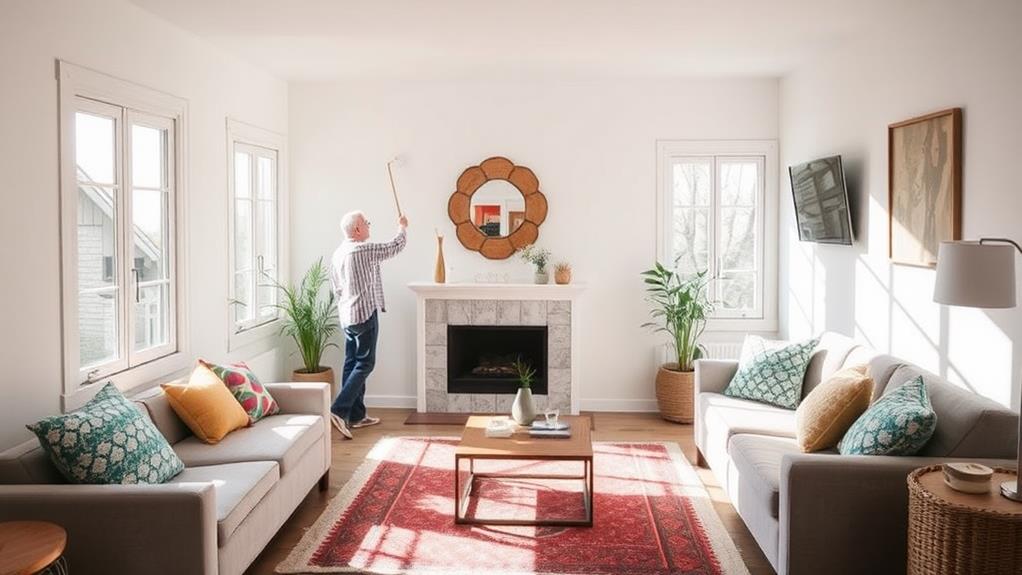
With a limited budget, homeowners can still achieve significant visual improvements through cost-effective cosmetic changes. These updates can dramatically enhance the look and feel of a space without requiring major structural alterations or expensive renovations.
Painting is one of the most impactful and affordable cosmetic changes. A fresh coat of paint can transform walls, cabinets, or even exterior surfaces, instantly updating the appearance of a home. Similarly, replacing outdated hardware on cabinets and doors can provide a modern touch at a minimal cost.
Updating lighting fixtures is another cost-effective way to refresh a space. New light fixtures can alter the ambiance and functionality of a room while also serving as decorative elements. Additionally, installing stylish window treatments or refreshing existing ones can significantly change the look of a room without breaking the bank.
Other budget-friendly cosmetic updates include refacing kitchen cabinets instead of replacing them, installing peel-and-stick backsplash tiles, or updating bathroom fixtures. These changes can create a noticeable difference in the overall aesthetics of a home while allowing homeowners to allocate more of their budget towards essential structural improvements when necessary.
Seeking Professional Guidance
While cost-effective cosmetic changes can yield impressive results, homeowners often face complex decisions when balancing structural and aesthetic improvements. In these situations, seeking professional guidance becomes crucial to make informed choices and allocate resources effectively.
Consulting with experts such as home inspectors, structural engineers, and experienced contractors can provide valuable insights into the condition of your property and help identify critical issues that may not be immediately apparent. These professionals can assess the structural integrity of your home, evaluate potential safety hazards, and recommend necessary repairs or upgrades.
Additionally, architects and interior designers can offer expertise in blending structural improvements with aesthetic enhancements, ensuring a cohesive and functional result. They can help prioritize projects based on importance, budget constraints, and long-term value.
Real estate professionals can also provide valuable input on which improvements are likely to yield the best return on investment in your local market. Their knowledge of current trends and buyer preferences can guide decision-making, particularly if you plan to sell your home in the near future.
Frequently Asked Questions
How Do I Handle Unexpected Structural Issues Discovered During Cosmetic Renovations?
When unexpected structural issues arise during cosmetic renovations, immediately halt work and consult a professional contractor or engineer. Assess the severity, obtain cost estimates, and reprioritize your budget to address critical structural repairs before resuming cosmetic updates.
What Financing Options Are Available for Major Home Improvement Projects?
Several financing options are available for major home improvement projects, including home equity loans, home equity lines of credit (HELOCs), personal loans, credit cards, and government-backed renovation loans such as FHA 203(k) loans or Fannie Mae HomeStyle loans.
How Can I Determine if DIY Is Appropriate for Structural Updates?
To determine if DIY is appropriate for structural updates, assess your skills, knowledge, and experience. Consult building codes and local regulations. For complex or safety-critical projects, it's best to consult a professional contractor or structural engineer.
Are There Tax Incentives for Certain Types of Home Improvements?
Yes, various tax incentives exist for certain home improvements. These may include energy-efficient upgrades, renewable energy installations, and accessibility modifications. Consult with a tax professional to understand specific deductions or credits available in your jurisdiction for qualifying improvements.
How Do Local Building Codes Affect Prioritization of Structural vs. Cosmetic Updates?
Building codes categorically command compliance, prioritizing pivotal structural updates over cosmetic changes. Local regulations rigorously require safety-focused improvements, often mandating mechanical, electrical, and plumbing upgrades before permitting purely aesthetic alterations. This legally-driven hierarchy shapes homeowners' renovation roadmaps.
Conclusion
In the grand irony of home improvement, structural integrity often takes a backseat to aesthetic allure. Yet, the most visually stunning abode may crumble without a solid foundation. Prudent homeowners must navigate this paradox, balancing the invisible yet crucial with the visibly appealing. By prioritizing structural soundness while strategically implementing cosmetic enhancements, one can create a home that is both safe and stylish—a true masterpiece of function masquerading as form.
